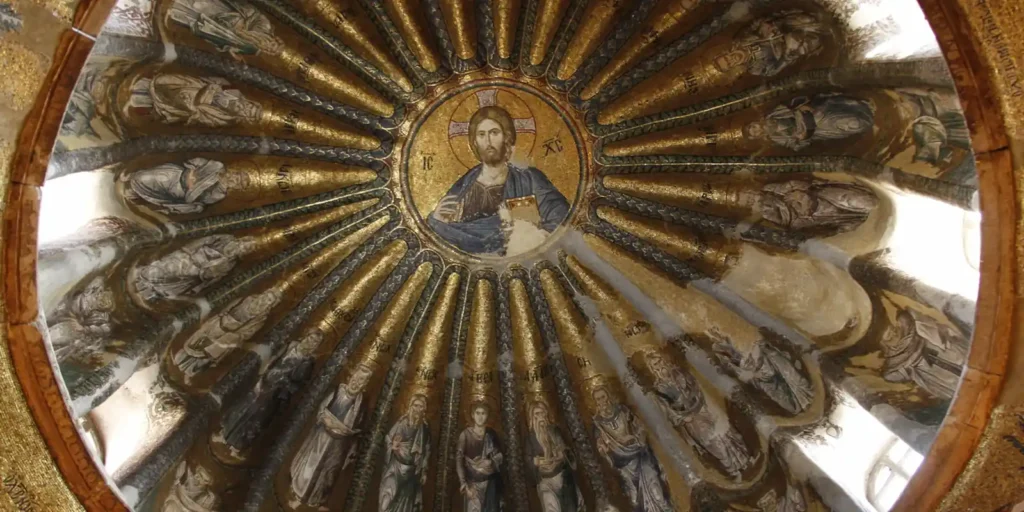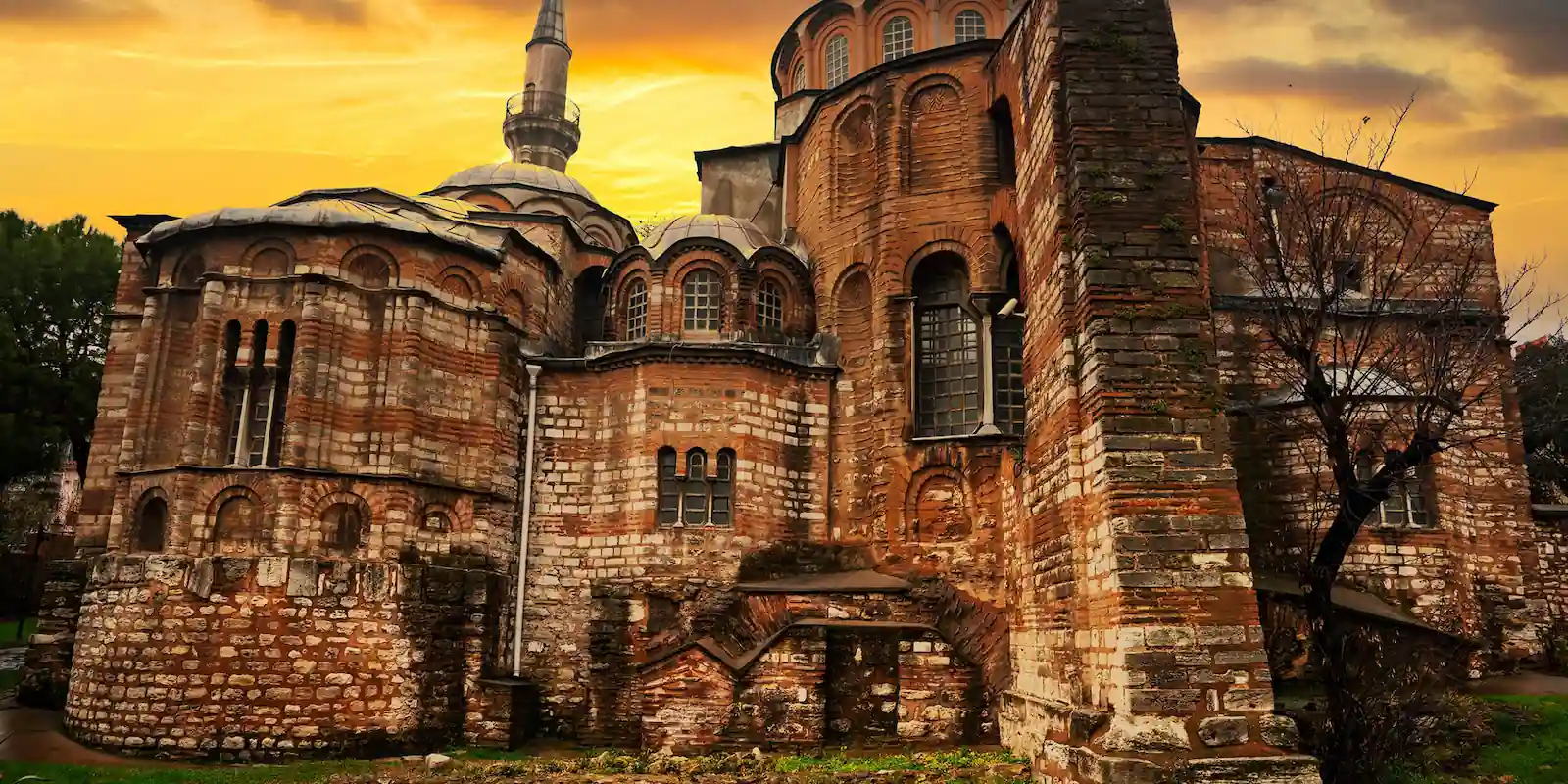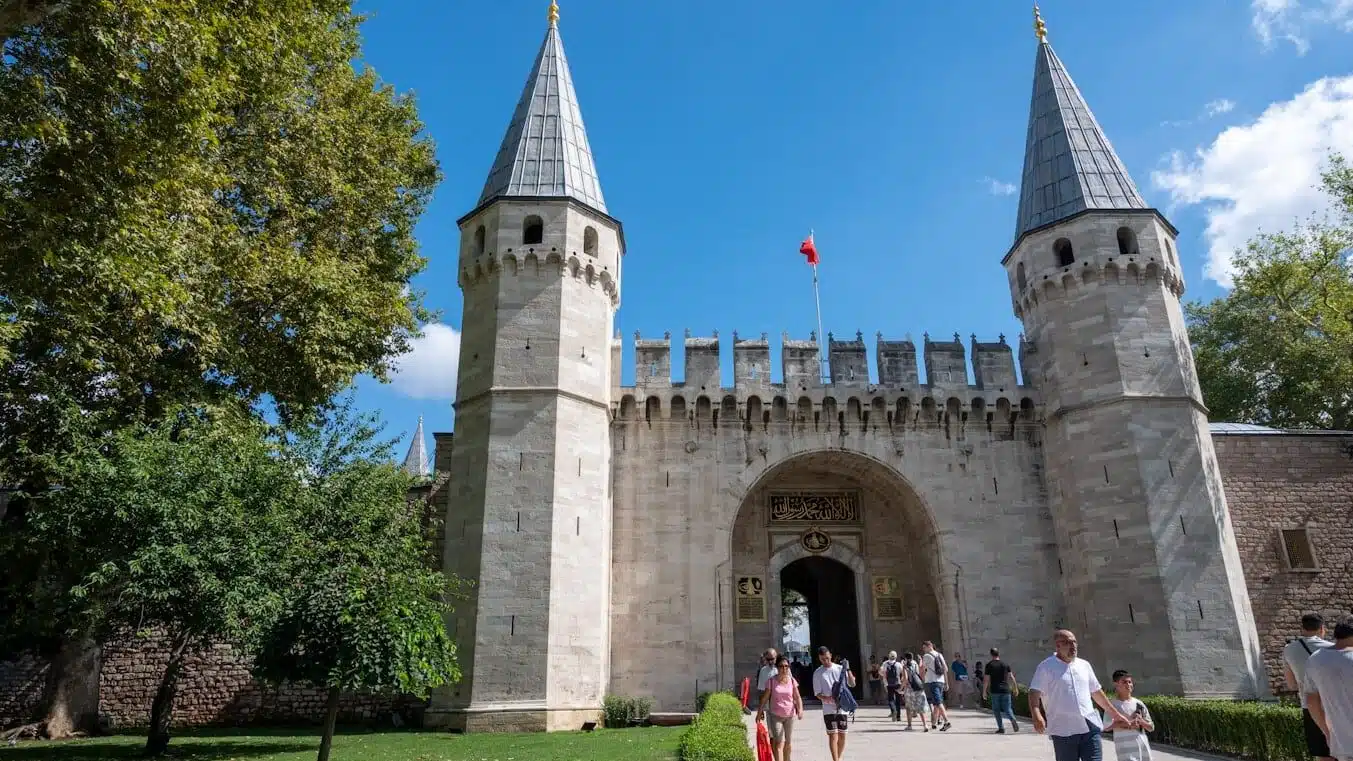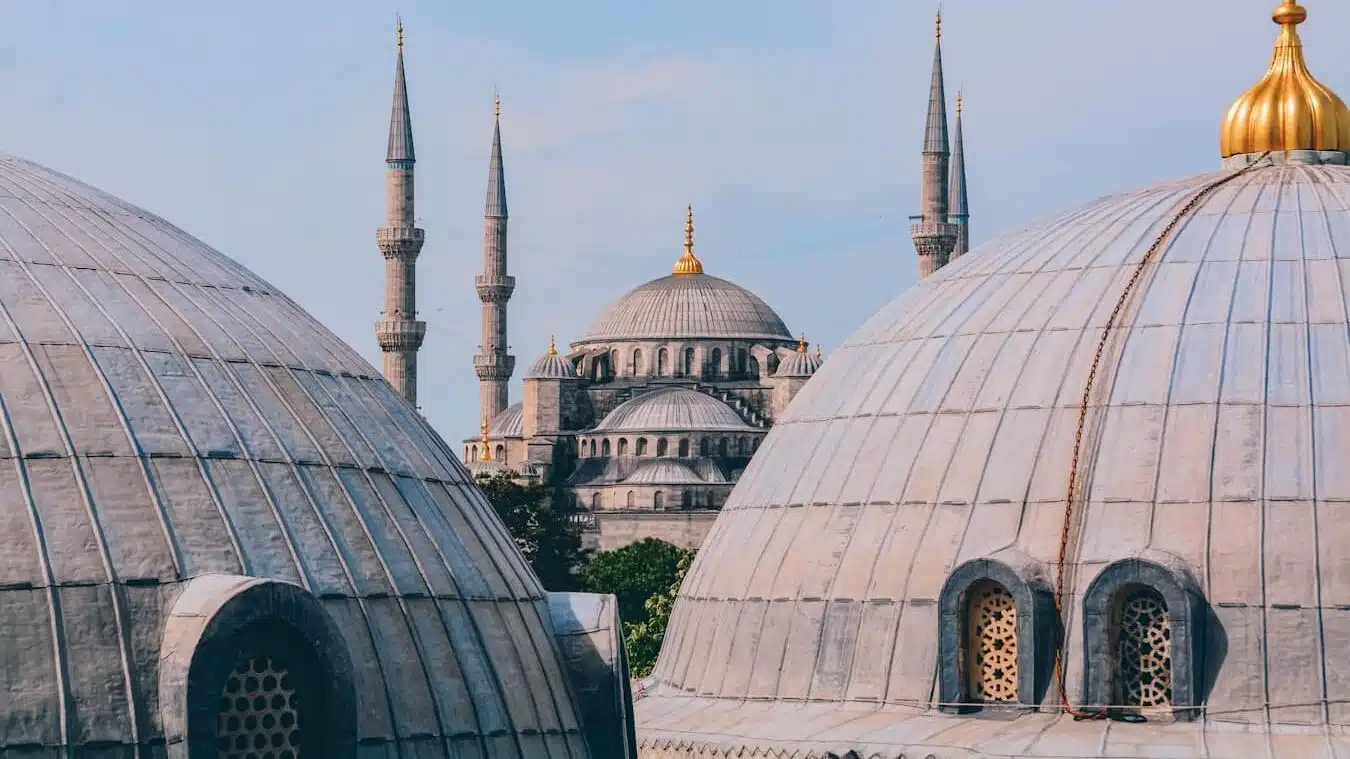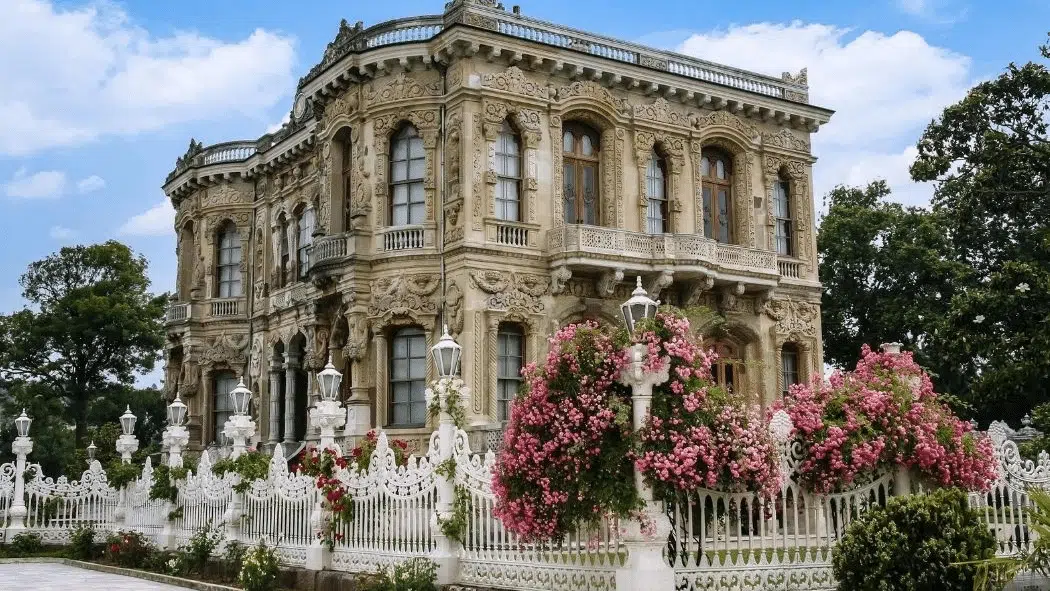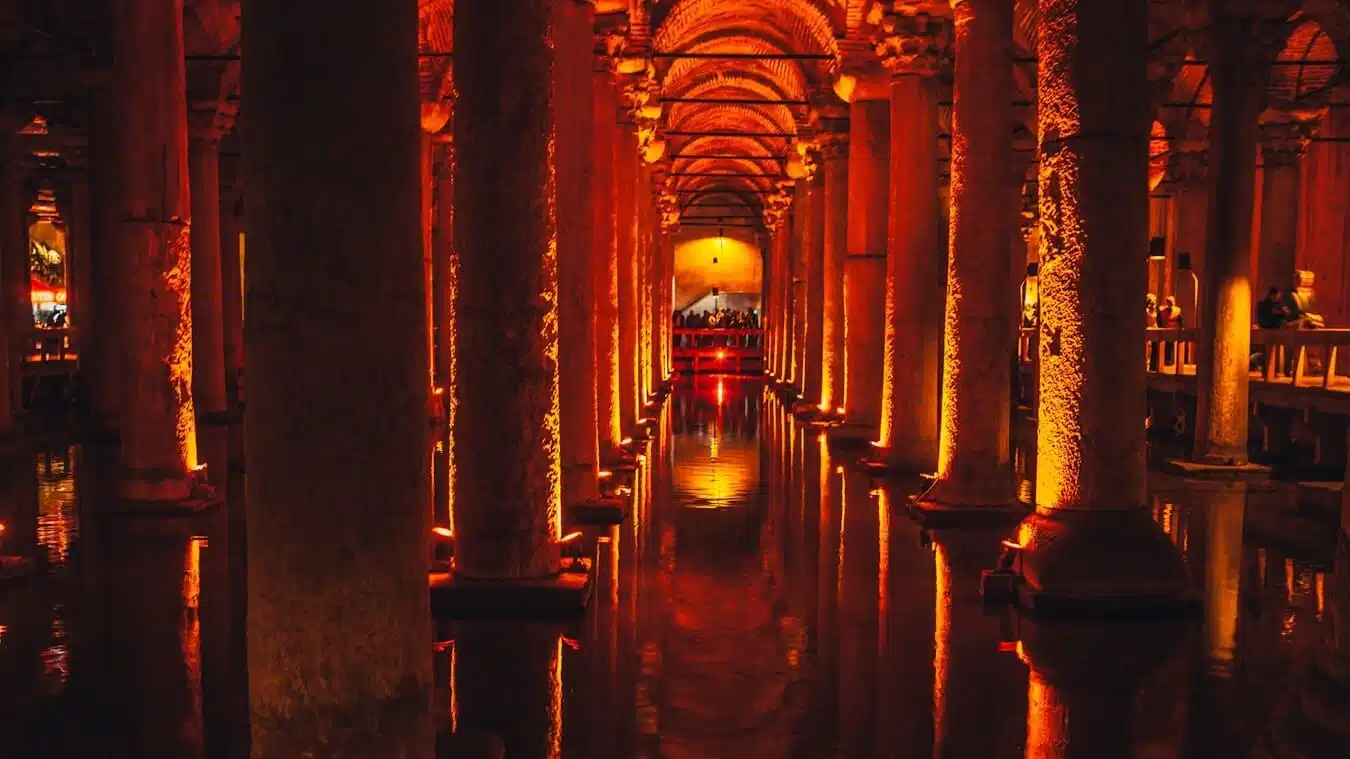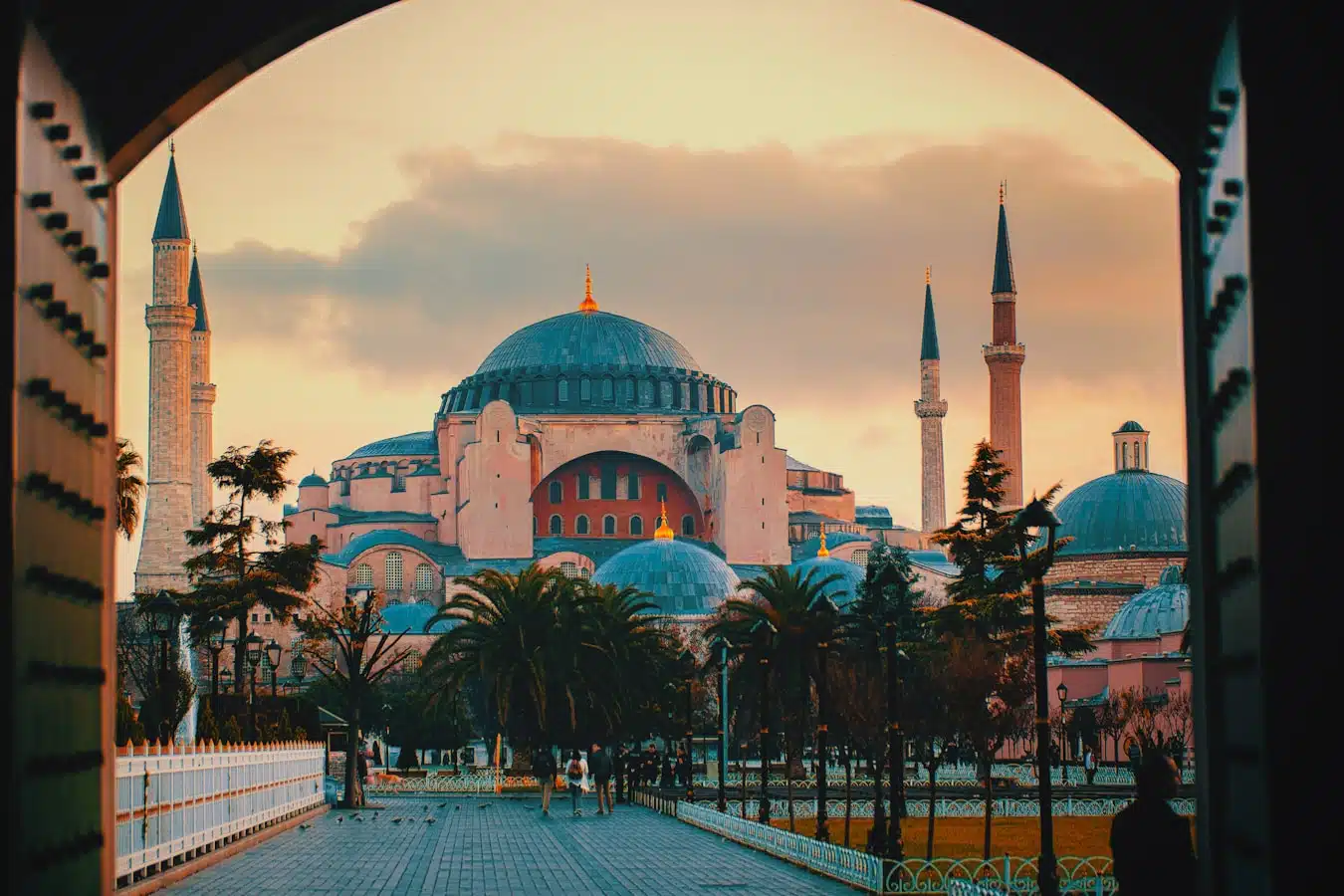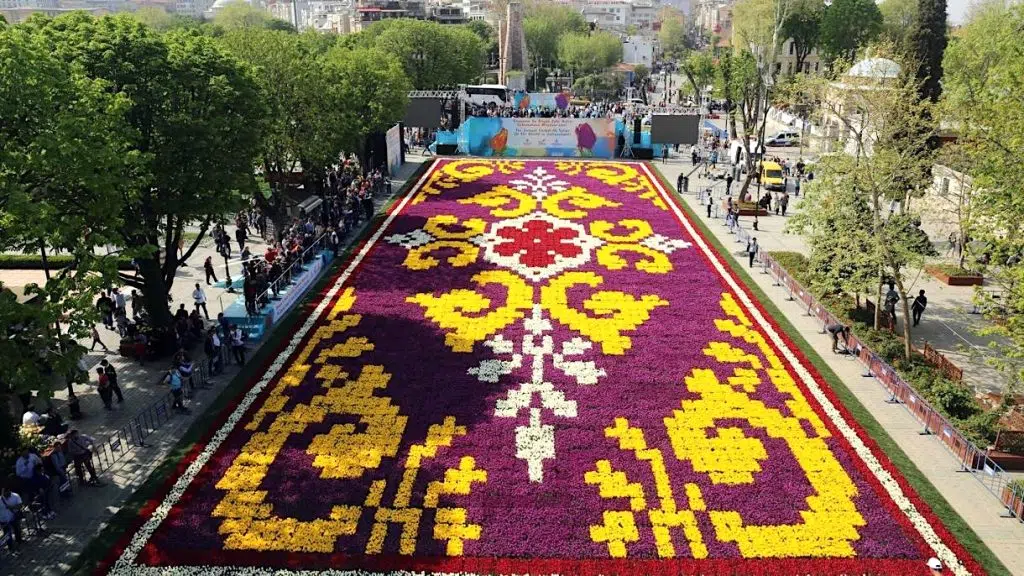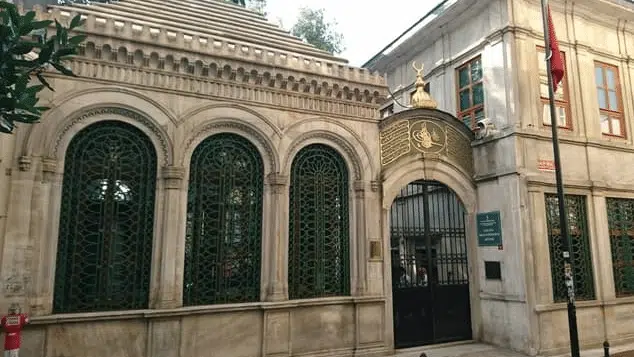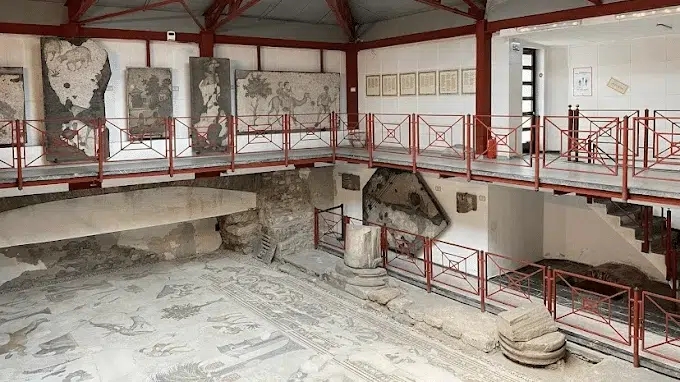🎟️ BOOK YOUR CHORA CHURCH TICKETS NOW! 🎟️
Online booking is easy and secure. Click the link below, choose your date, and confirm instantly:
Don’t wait—these tours often sell out, especially on weekends and holidays!
Visiting Kariye Mosque (Chora Church)
What Should You Expect When Visiting Chora Church?
Chora Church is famous for its stunning Byzantine mosaics and frescoes, which depict scenes from the life of Christ and the Virgin Mary. Visitors can expect:
- Exquisite Byzantine Art – The golden mosaics and detailed frescoes inside are among the finest examples of Eastern Orthodox religious art.
- A Blend of History and Faith – Once a Byzantine church, then an Ottoman mosque, and later a museum, Chora reflects Istanbul’s layered religious history.
- A Peaceful Atmosphere – Unlike the Hagia Sophia, Chora Church is less crowded, offering a more intimate experience with its artwork and history.
- Restoration Works – Visitors should check if any sections of the church are undergoing restoration, as access to certain areas may be limited.
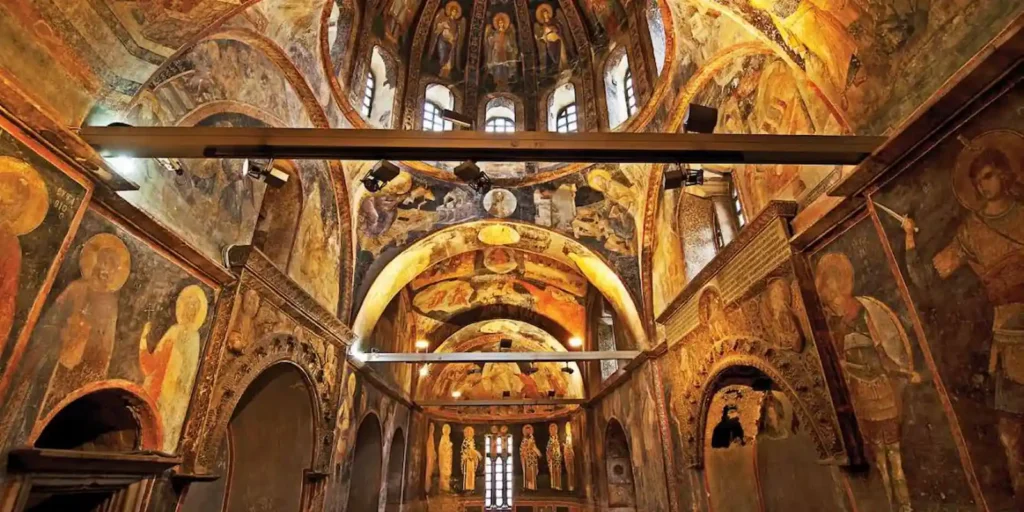
When Is the Best Time to Visit Chora Church?
To fully enjoy your visit, consider these factors when choosing the best time to go:
- Early Mornings or Late Afternoons – Visiting before 11 AM or after 4 PM helps avoid peak crowds.
- Weekdays Over Weekends – Weekdays are generally quieter, as weekends tend to attract more visitors.
- Spring and Autumn (March-May & September-November) – These seasons offer pleasant weather, making exploring both Chora Church and its surroundings more enjoyable.
- During Prayer Times – As Chora Church is now Kariye Mosque, it may have restrictions during prayer hours. Checking schedules before arrival is recommended.
With its rich history, breathtaking mosaics, and serene ambiance, Chora Church remains one of Istanbul’s most fascinating cultural treasures.
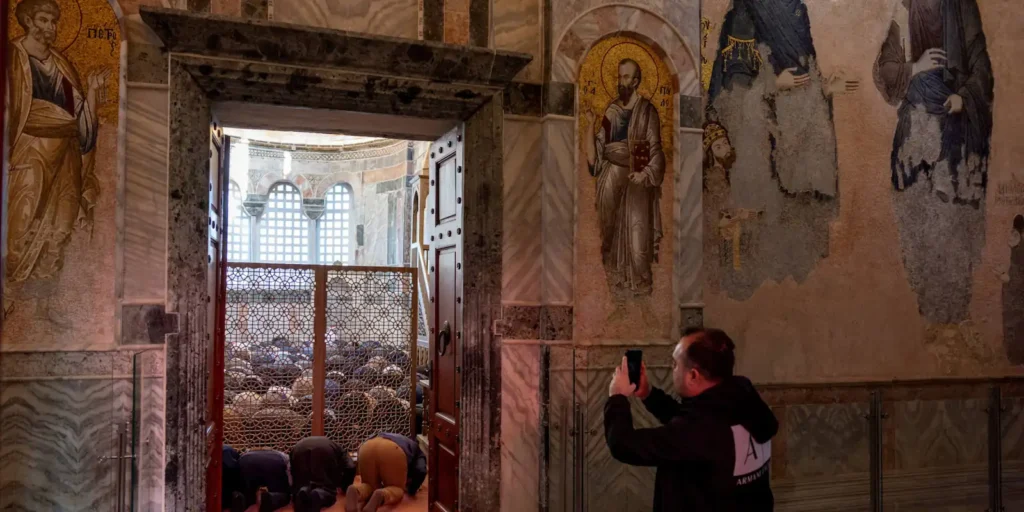
Where Is Kariye Mosque (Chora Church) Located?
Chora Church (Kariye Mosque) is located in the Fatih district of Istanbul, in the Edirnekapı neighborhood, near the historic city walls of Constantinople. It is slightly off the beaten tourist path but easily accessible by various modes of transportation.
How to Get to Chora Church?
- By Tram & Bus – Take the T1 Tram Line to Eminönü or Laleli, then transfer to a bus heading to Edirnekapı.
- By Metro – Use the M2 Metro Line to Vezneciler Station, then take a short taxi or bus ride.
- By Bus – Several city buses stop near Edirnekapı, making it one of the easiest public transport options.
- By Taxi or Ride-Sharing – A taxi from Sultanahmet or Taksim takes around 15-20 minutes, depending on traffic.
- By Walking – If you enjoy historic walks, Chora Church is within walking distance from the Theodosian Walls and Fethiye Mosque.
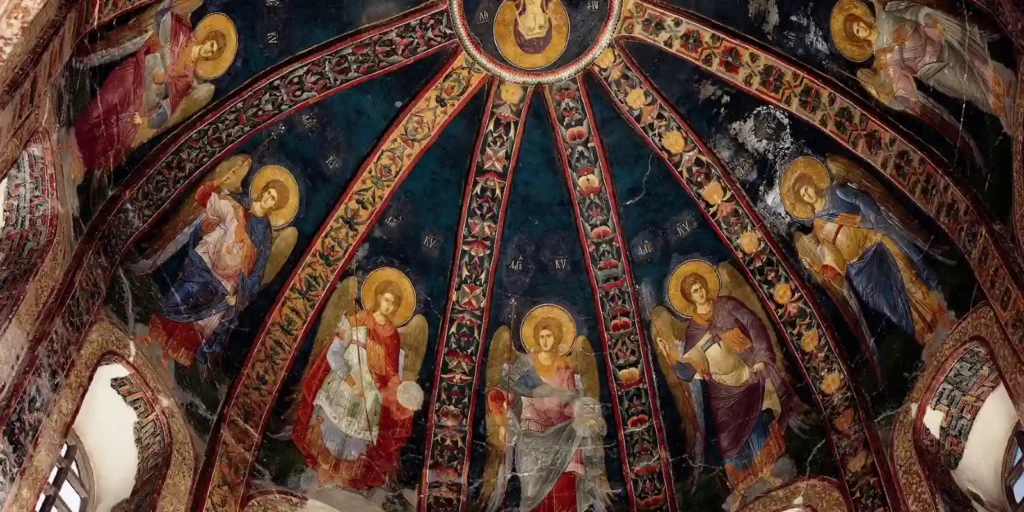
Exploring the Surroundings
What Other Attractions Are Near Chora Church?
The Chora Church (Kariye Mosque) is located in the historic Fatih district, surrounded by several significant landmarks and cultural sites. If you’re visiting Chora, here are some nearby attractions worth exploring:
- The Theodosian Walls – One of the most well-preserved sections of Istanbul’s ancient city walls, located just a short walk from Chora Church. These 5th-century fortifications once protected Constantinople from invasions.
- Mihrimah Sultan Mosque – A beautiful 16th-century Ottoman mosque designed by Mimar Sinan, located in Edirnekapı, close to Chora Church.
- Fethiye Mosque (Pammakaristos Church) – Originally a Byzantine church, this site still holds stunning mosaics and is a great complementary visit after Chora.
- Balat & Fener Districts – These colorful, historic neighborhoods are famous for vibrant houses, Orthodox churches, synagogues, and charming cafés. They offer a picturesque walk from Chora Church.
- Rahmi M. Koç Museum – A fascinating industrial and transport museum showcasing vintage cars, trains, and submarines, ideal for those interested in technology and history.
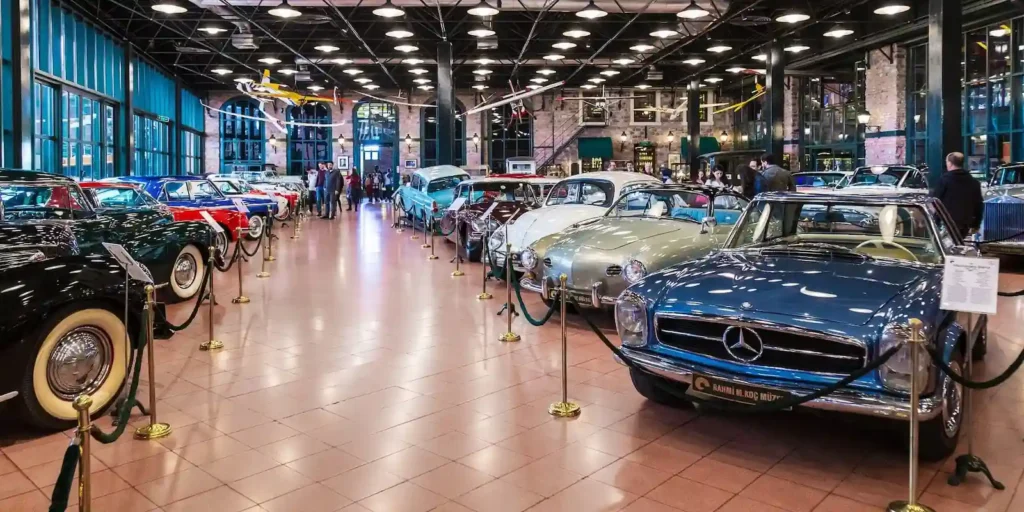
Can You Combine a Visit to Chora Church with Other Byzantine Sites?
Yes, Chora Church is an excellent starting point for exploring other significant Byzantine landmarks in Istanbul. Whether you’re fascinated by ancient fortifications, religious history, or stunning mosaics, you can plan a well-structured itinerary that takes you through the legacy of Constantinople.
1. Chora Church & Theodosian Walls
- Start your visit at Chora Church, then take a short walk to the Theodosian Walls, where you can explore gates, towers, and remnants of Byzantine defenses.
- These 5th-century walls protected Constantinople for centuries and offer a glimpse into the city’s military past.
- Some sections, like the Edirnekapı Gate, provide panoramic views of the historic city.

2. Chora Church & Fethiye Mosque
- Since both sites were originally Byzantine churches, visiting them together gives a deeper insight into Istanbul’s transition from Byzantium to the Ottoman era.
- Fethiye Mosque (formerly Pammakaristos Church) houses some well-preserved Byzantine mosaics, making it an ideal complement to Chora’s breathtaking artwork.
- Located in the Fatih district, it’s a short drive or walk from Chora, making it easy to include in your itinerary.
3. Chora Church & Hagia Sophia
- If you’re interested in Byzantine mosaics and domed architecture, a visit to Hagia Sophia is a must. Take a short taxi or bus ride from Chora to Sultanahmet to explore this iconic landmark.
- Hagia Sophia, once the largest cathedral in the world, features a blend of Christian and Islamic elements, much like Chora.
- Inside, you’ll find massive domes, golden mosaics, and ancient inscriptions that reveal Istanbul’s layered history.

4. Chora Church & Greek Orthodox Landmarks
- Combine Chora with a visit to the Ecumenical Patriarchate of Constantinople in Fener, one of the most important sites in Orthodox Christianity.
- This area is also home to the Church of St. George, which houses sacred relics, ancient icons, and significant Orthodox artifacts.
- Walking through the colorful streets of Fener offers an immersive cultural experience, filled with historic churches, old mansions, and traditional cafés.
A half-day itinerary including Chora Church, the city walls, and Byzantine-era religious sites provides a rich historical and cultural experience in Istanbul, allowing visitors to trace the city’s transformation from Byzantium to the Ottoman Empire.

Religious and Cultural Transformation
Why Was Chora Church Converted into a Mosque?
The Chora Church (Kariye Mosque) was converted into a mosque due to Istanbul’s long history of religious transformation following the Ottoman conquest of Constantinople in 1453. The church, originally built as part of a Byzantine monastery, served as an important place of worship and artistic achievement. However, in 1511, under the rule of Ottoman Grand Vizier Hadim Ali Pasha, it was converted into a mosque to align with the city’s growing Islamic identity.
Key reasons for the conversion:
- Continuing Ottoman Tradition – Many Byzantine churches, including Hagia Sophia, were converted into mosques after the conquest.
- Strategic Religious and Cultural Integration – Transforming churches into mosques symbolized the unification of the city under Ottoman rule.
- Preserving the Architectural Legacy – Instead of demolishing such significant structures, the Ottomans repurposed them, maintaining their historical importance while adapting them for Islamic worship.
Chora remained a mosque for centuries until 1945, when it was secularized and turned into a museum. However, in 2020, it was reconverted into a mosque by the Turkish government, similar to Hagia Sophia.
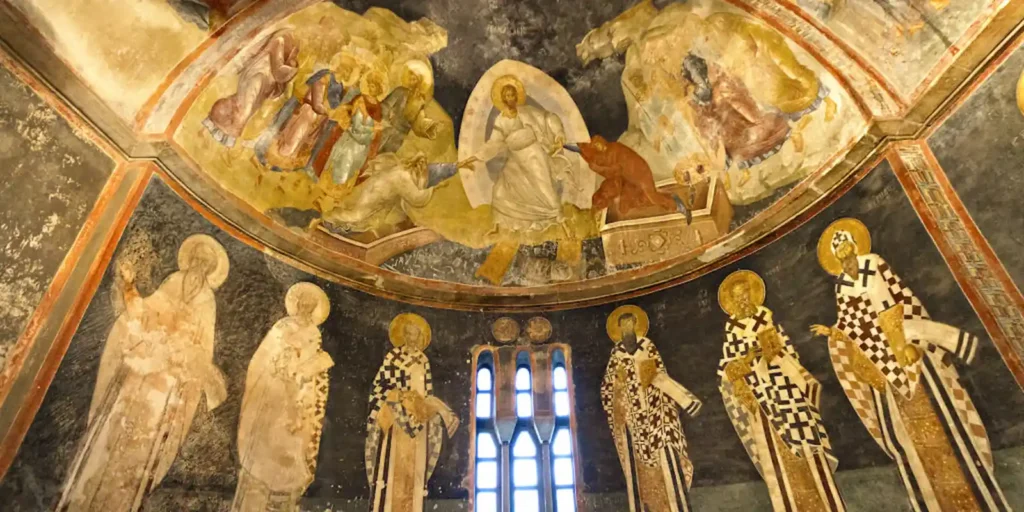
What Changes Were Made to Chora Church After Its Conversion?
When Chora Church was converted into a mosque, several modifications were made to adapt the space for Islamic worship while preserving its Byzantine structure:
- Mosaics and Frescoes Were Covered – Since Islamic tradition prohibits figurative images in religious spaces, the church’s famous mosaics and frescoes were either plastered over or covered with cloth.
- A Mihrab Was Installed – A mihrab (prayer niche facing Mecca) was added to the main hall to accommodate Muslim prayers.
- Minarets Were Built – Although Chora was a smaller mosque compared to Hagia Sophia, a single minaret was eventually added to indicate its function as a place of Islamic worship.
- Removal of Christian Elements – Altars, crosses, and other Christian religious symbols were removed or replaced with Islamic calligraphy and motifs.
- Additional Prayer Spaces – Some parts of the church were modified to create separate prayer sections for men and women, following Islamic customs.
Despite these changes, Chora retained much of its original Byzantine structure, making it an architectural blend of Christian and Islamic influences.

How Does Chora Church Reflect the Religious History of Istanbul?
Chora Church (Kariye Mosque) is a perfect example of Istanbul’s layered religious history, showcasing the city’s evolution from Byzantine Christianity to Ottoman Islam and modern secularism.
- A Symbol of Byzantine Glory – As a church, Chora was one of the finest Byzantine religious structures, decorated with some of the most elaborate mosaics and frescoes in the world.
- Ottoman Adaptation and Preservation – Rather than destroying it, the Ottomans converted Chora into a mosque, preserving its structure while repurposing it for Islamic use.
- A Shift to Secularism – In 1945, Chora was transformed into a museum, reflecting modern Turkey’s embrace of secular policies and the appreciation of its multi-religious past.
- Recent Reconversion into a Mosque – The decision to convert Chora back into a mosque in 2020 reflects ongoing debates about the role of religious heritage sites in contemporary Turkey.
Chora’s journey from church to mosque to museum and back to mosque mirrors the broader transformation of Istanbul itself, a city that has continually reinvented its cultural and religious identity.
